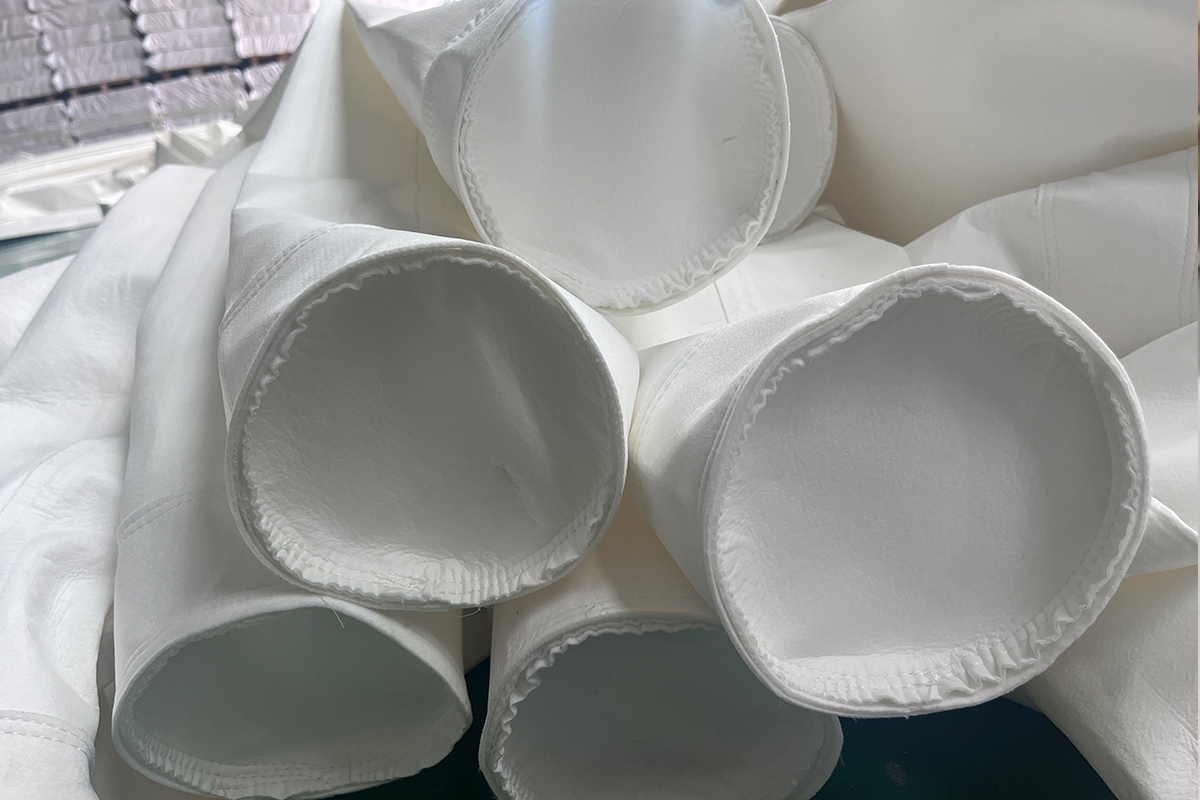
Why PPS Filter Bags Dominate in Harsh Industrial Environments
Polyphenylene Sulfide (PPS) is a semi-crystalline, high-performance thermoplastic engineering plastic. Its molecular backbone consists of benzene rings and para-linked sulfur atoms arranged alternately.
This specific structure gives PPS outstanding properties. Consequently, it exhibits excellent heat resistance, chemical corrosion resistance, and flame retardancy.
I. Why PPS Fiber is Ideal for Dust Filter Bags
Dust filter bags are the core component of baghouse dust collectors. Their performance directly determines the collection efficiency, system resistance, and service life. PPS fiber is almost tailor-made for certain harsh working conditions. Its main advantages are as follows:
Excellent High-Temperature Resistance:
PPS fiber can operate continuously at temperatures up to 190°C. It can even withstand short-term peak temperatures of 220°C. Therefore, it handles high-temperature flue gas from coal-fired boilers or waste incineration very well. This often eliminates the need for significant cooling, which saves energy.Outstanding Chemical Corrosion Resistance:
This is one of PPS’s most prominent advantages. It strongly resists most acids (except strong oxidizing acids like concentrated nitric acid and sulfuric acid), alkalis, organic solvents, and oxidizers. This is particularly useful for flue gas containing sulfur oxides (SOx), such as in coal-fired power plants. PPS shows much better durability than traditional materials like polyester or acrylic. Sulfur compounds in the flue gas can form sulfuric acid, which corrodes filter bags. However, PPS has a natural resistance to this.Superior Flame Retardancy:
PPS has a Limiting Oxygen Index (LOI) of 34-35%. This makes it inherently flame-retardant. It does not burn in air. Even if ignited by an open flame, it self-extinguishes upon removal from the fire source. This property is crucial for preventing fires caused by sparks, ensuring high safety.Good Mechanical Properties:
PPS fiber has high strength and rigidity. It also offers good tensile and abrasion resistance. As a result, it can withstand mechanical fatigue and friction during cleaning cycles (like pulse-jet cleaning), leading to a longer service life.Stable Dimensional Stability:
PPS fiber has a very low thermal shrinkage rate. It maintains the filter bag’s dimensional stability even in high-temperature environments. The bags will not shrink or deform. This ensures a proper fit between the bag and its cage, preventing leaks and wear.
II. Main Application Areas for PPS Filter Bags
Because of these advantages, PPS filter bags are widely used in harsh applications involving high temperatures and chemical corrosion:
- Coal-Fired Power Plant Boilers: This is the largest and most classic application for PPS bags. Boiler flue gas is hot and contains sulfur oxides, making PPS the best choice.
- Municipal Solid Waste Incinerators: Incineration flue gas has complex components, high temperatures, and strong corrosiveness. PPS filter bags are the standard here.
- Cement Kiln Tail Gas: The gas from cement production has high temperatures, sharp dust particles, and alkaline corrosion.
- Steel Plant Sintering & Electric Furnace Flue Gas: This flue gas contains various corrosive chemicals.
- Chemical Production Processes: PPS bags handle special dust and flue gas generated during the production of various chemical products.
III. Limitations and Considerations for PPS Filter Bags
Despite its excellent performance, PPS is not universal. It has specific limitations:
Poor Oxidation Resistance: This is PPS’s main weakness. When the operating temperature consistently exceeds 190°C, or the oxygen content in the flue gas is above 10%, the PPS molecular chain can oxidize. This is especially true at high temperatures. Oxidation causes the fibers to become brittle, lose strength, and eventually break. Therefore, flue gas temperature and oxygen content must be strictly controlled.
Not Resistant to Strong Oxidizers: It can be attacked by high concentrations of strong oxidizing acids, like concentrated nitric acid or chromic acid.
Higher Cost: As a high-performance specialty fiber, PPS is more expensive than conventional filter materials like polyester or polypropylene. However, its long life and stability often provide a high overall cost-performance ratio.
IV. Common Forms of PPS Filter Media
PPS filter media is typically made into bags in the following forms:
- PPS Needled Felt: This is the most common form. The process involves needling PPS staple fibers into a PPS base fabric. This creates a three-dimensional microporous structure with high filtration accuracy and large dust holding capacity.
- PPS Membrane Filter Media: A layer of ePTFE (expanded Polytetrafluoroethylene) microporous membrane is laminated onto the surface of PPS needled felt. This membrane enables “surface filtration.” Essentially all dust is collected on the membrane surface. This makes cleaning easier, reduces system operating resistance, and allows for lower emission concentrations (can achieve <5 mg/m³ or lower). It represents the mainstream trend for high-efficiency filtration.
- Blended with Other Fibers: Sometimes PPS is blended with fibers like P84 (polyimide, for better temperature resistance) or PTFE (polytetrafluoroethylene, for best chemical resistance). Manufacturers do this to optimize performance or cost, and to compensate for PPS’s limitations in oxidation resistance or extreme corrosion resistance.
Summary
Polyphenylene Sulfide (PPS) fiber is a top choice for filtering high-temperature, chemically corrosive flue gas in applications like coal-fired power plants and waste incineration. This is due to its continuous temperature resistance of 190°C, excellent acid and chemical corrosion resistance, and inherent flame retardancy.
Although its poor oxidation resistance in high-oxygen environments is a limitation requiring strict control of conditions, its overall performance advantages give it an irreplaceable role in industrial dust removal.
When selecting a filter material, always check the specific flue gas composition, temperature, humidity, and oxygen content to determine if PPS is suitable.


